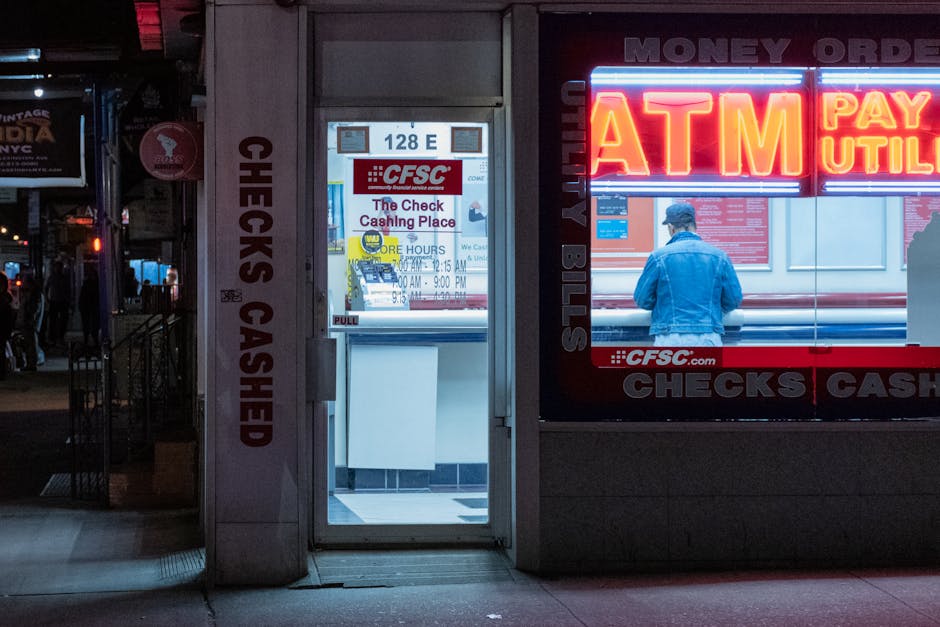Money Matters in Japan: Your Guide to Yen, ATMs, and Navigating the Cash Culture

Money Matters in Japan: Your Guide to Yen, ATMs, and Navigating the Cash Culture
Konnichiwa, fellow travelers! Japan, a land of stunning temples, bustling cities, and delicious food, is a dream destination for many. But before you pack your bags and hop on a plane, let's talk about something crucial: money. Navigating the financial landscape of Japan can feel a little different from what you're used to, especially with its strong cash culture. Don't worry, though! I'm here to share my experiences and insights to help you handle your yen like a pro.
Understanding the Japanese Yen (JPY)

First things first, let's get acquainted with the currency: the Japanese Yen (JPY). It's represented by the symbol ¥ and the currency code JPY. You'll encounter banknotes in denominations of ¥1000, ¥2000 (though these are rare), ¥5000, and ¥10,000. Coins come in ¥1, ¥5, ¥10, ¥50, ¥100, and ¥500. Keep an eye out for the intricate designs on the banknotes – they're mini works of art!
Understanding Exchange Rates: The exchange rate between the Yen and your home currency will fluctuate, so it's wise to keep an eye on it before and during your trip. Websites like Google Finance, XE.com, and your bank's website are great resources for checking the current exchange rate. Remember that rates can change quickly, so don't stress too much about catching the absolute perfect moment, but a general awareness is helpful.
How Much Cash to Bring: This is the million-yen question (pun intended!). Japan still operates largely on a cash basis, especially in smaller towns, local restaurants, temples, and traditional shops. While credit cards are becoming more widely accepted, it's always a good idea to have enough cash on hand. I generally recommend budgeting for at least 5000-10000 JPY per day, depending on your spending habits and travel style. If you plan on staying in budget hotels or eating at local ramen shops, you can get by with less. However, if you're splurging on Michelin-starred restaurants and staying in luxury accommodations, you'll need to increase your budget accordingly.
The ATM Situation: Your Cash Lifeline

ATMs are your best friend when you need to replenish your cash supply. However, not all ATMs in Japan accept foreign cards. This is where convenience stores come to the rescue!
Convenience Store ATMs (Konbini ATMs): 7-Eleven (Seven Bank) and FamilyMart (E-net) are your go-to spots. These convenience stores are ubiquitous throughout Japan, and their ATMs are generally reliable for accepting international cards from major networks like Visa, Mastercard, Cirrus, and Plus. Look for ATMs with English language options to make the process even easier. When withdrawing cash, be aware of any fees your bank might charge for international transactions and ATM withdrawals.
Post Office ATMs (Japan Post Bank ATMs): These ATMs also tend to accept foreign cards and offer English language support. They are another great option if you can find one nearby.
Bank ATMs: While some bank ATMs might accept foreign cards, it's not always guaranteed. Major banks like MUFG and SMBC might have some ATMs that work, but it's best to stick with convenience store ATMs to avoid any hassle.
ATM Withdrawal Limits: Keep in mind that ATMs usually have daily withdrawal limits. These limits can vary, so it's a good idea to check the specific ATM's limit before attempting a large withdrawal. It's also a good idea to inform your bank of your travel dates to Japan so they don't flag your transactions as suspicious activity and block your card.
Embracing the Cash Culture: Tips and Tricks

Japan's cash culture is deeply ingrained in its society, and understanding it will make your trip smoother and more enjoyable. Here are some tips to help you navigate the cash-centric environment:
1. Always Have Cash on Hand: As mentioned earlier, having enough cash is essential. Don't rely solely on credit cards, especially when venturing outside of major cities.
2. Smaller Denominations are Your Friend: While larger bills are accepted, it's helpful to have a mix of smaller denominations, especially when shopping at smaller stores or making small purchases. Breaking a ¥10,000 note for a ¥200 purchase can sometimes be frowned upon, or at least cause a delay.
3. Coin Purses are Essential: With so many coins in circulation, a coin purse is a must-have. It will help you keep your coins organized and prevent them from jingling around in your pockets.
4. Be Prepared for Cash-Only Establishments: Many smaller restaurants, family-run shops, and traditional businesses only accept cash. Look for signs indicating accepted payment methods before you order or start shopping.
5. Proper Etiquette: When paying with cash, place the money in the tray provided at the cashier. Avoid handing the money directly to the cashier, as this is considered impolite. Similarly, when receiving change, take it from the tray instead of directly from the cashier's hand.
6. Tipping is Not Expected (or Required): Unlike in many Western countries, tipping is not customary in Japan. In fact, it can even be considered rude. Service charges are often included in the bill, so there's no need to add an extra tip. You might even be chased down if you attempt to leave a tip!
7. Consider a Japan Rail Pass: If you plan on doing a lot of train travel, a Japan Rail Pass can be a cost-effective option. However, you need to purchase the pass before you arrive in Japan. Do your research and see if it makes sense for your itinerary.
8. IC Cards (Suica or Pasmo): These rechargeable cards are a convenient way to pay for public transportation in major cities like Tokyo and Osaka. You can also use them to pay at vending machines and some convenience stores. You can purchase and recharge them at train stations. Using an IC card can save you time and hassle compared to buying individual tickets each time you ride the train.
a. Suica: Primarily associated with JR East (the main railway company in eastern Japan, including Tokyo). b. Pasmo: Primarily associated with private railway companies and bus operators in the Tokyo area.
They are generally interchangeable within their coverage areas, meaning a Suica card will work on Pasmo-affiliated transit lines and vice-versa.
Credit Card Acceptance: Progress is Being Made

While Japan is known for its cash culture, credit card acceptance is gradually increasing, especially in major cities and tourist areas. Major hotel chains, department stores, larger restaurants, and some retailers readily accept credit cards. Visa and Mastercard are the most widely accepted cards, while American Express and Discover might have limited acceptance.
Contactless Payments: Contactless payments, like Apple Pay and Google Pay, are also becoming more popular, but their acceptance is still not as widespread as in some other countries. It's worth checking if a store or restaurant accepts contactless payments before you try to use them.
Be Aware of Foreign Transaction Fees: Before you leave for Japan, check with your bank about any foreign transaction fees associated with using your credit card. These fees can add up quickly, so it's a good idea to use a credit card with no foreign transaction fees, if possible. Also, be sure to let your credit card company know you'll be traveling to Japan so they don't flag your transactions as suspicious.
Budgeting Tips for Japan: Making Your Yen Stretch Further

Japan can be an expensive country, but with some careful planning and budgeting, you can make your yen stretch further and enjoy a memorable trip without breaking the bank. Here are some tips to help you budget effectively:
1. Accommodation: Consider staying in budget-friendly accommodations like hostels, guesthouses, or capsule hotels. These options can save you a significant amount of money compared to traditional hotels.
2. Food: Eating out can be expensive, but there are plenty of affordable options available. Try ramen shops, udon restaurants, and convenience store meals. Supermarkets also offer a variety of ready-to-eat meals at reasonable prices. Don't be afraid to explore local markets and try street food – it's often delicious and inexpensive.
3. Transportation: Public transportation is efficient but can be costly. If you plan on traveling extensively by train, consider purchasing a Japan Rail Pass. Within cities, take advantage of subway day passes or IC cards to save money on transportation costs.
4. Activities: Many temples and shrines are free to enter, and there are plenty of parks and gardens where you can relax and enjoy the scenery without spending any money. Look for free events and festivals happening during your visit.
5. Free Walking Tours: Many cities offer free walking tours, which are a great way to learn about the local culture and history without spending any money. While they're technically free, it's customary to tip the guide at the end of the tour if you enjoyed it.
A Final Word: Embrace the Experience

Navigating the money matters in Japan might seem a bit daunting at first, but with a little preparation and understanding, you'll be able to handle your yen like a local. Embrace the cash culture, explore the local markets, and enjoy the incredible experiences that Japan has to offer. Don't let the fear of financial mishaps hold you back from exploring this amazing country. Happy travels!
Post a Comment